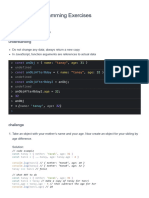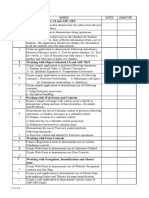0% found this document useful (0 votes)
64 views6 pagesFSD Lab Manual
The document provides a series of code snippets for various web development projects using Node.js, Express, MongoDB, AngularJS, and ReactJS. It covers applications ranging from a simple 'Hello World' server to more complex systems like user login, food delivery, and online stores. Each section includes essential code examples to serve as a foundation for further development.
Uploaded by
bharathpatel612Copyright
© © All Rights Reserved
We take content rights seriously. If you suspect this is your content, claim it here.
Available Formats
Download as PDF, TXT or read online on Scribd
0% found this document useful (0 votes)
64 views6 pagesFSD Lab Manual
The document provides a series of code snippets for various web development projects using Node.js, Express, MongoDB, AngularJS, and ReactJS. It covers applications ranging from a simple 'Hello World' server to more complex systems like user login, food delivery, and online stores. Each section includes essential code examples to serve as a foundation for further development.
Uploaded by
bharathpatel612Copyright
© © All Rights Reserved
We take content rights seriously. If you suspect this is your content, claim it here.
Available Formats
Download as PDF, TXT or read online on Scribd
/ 6




























































































